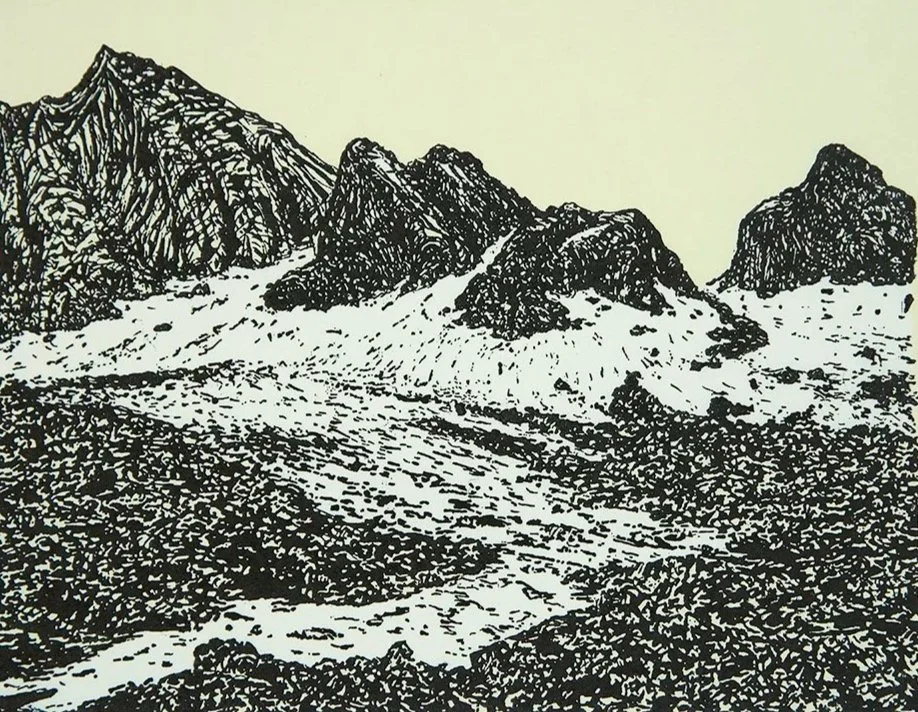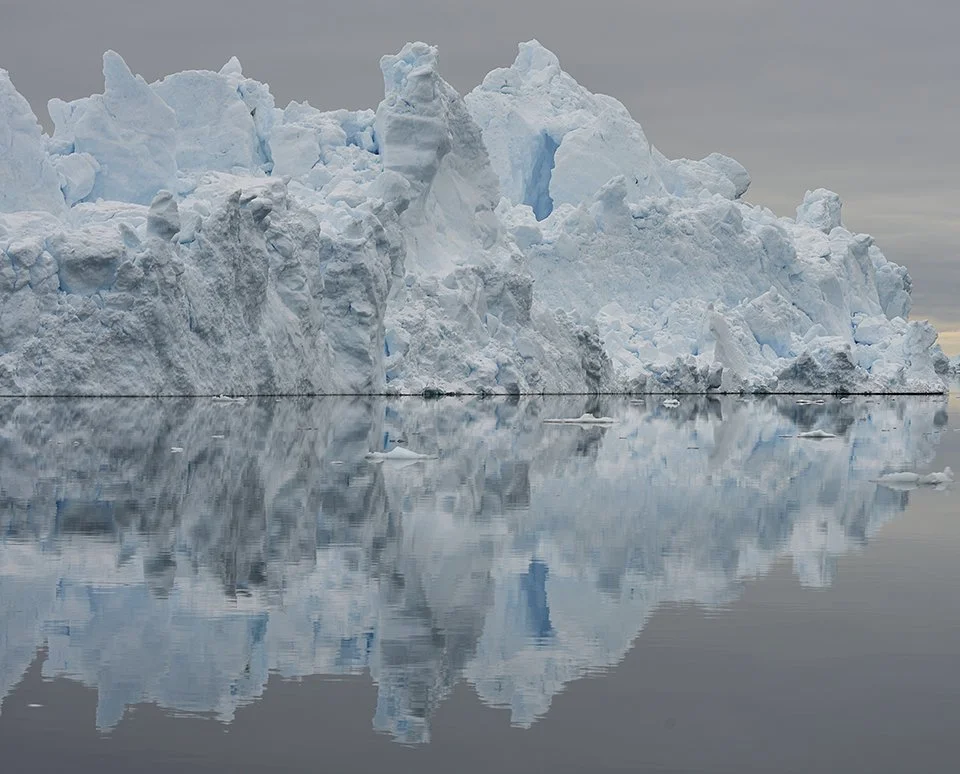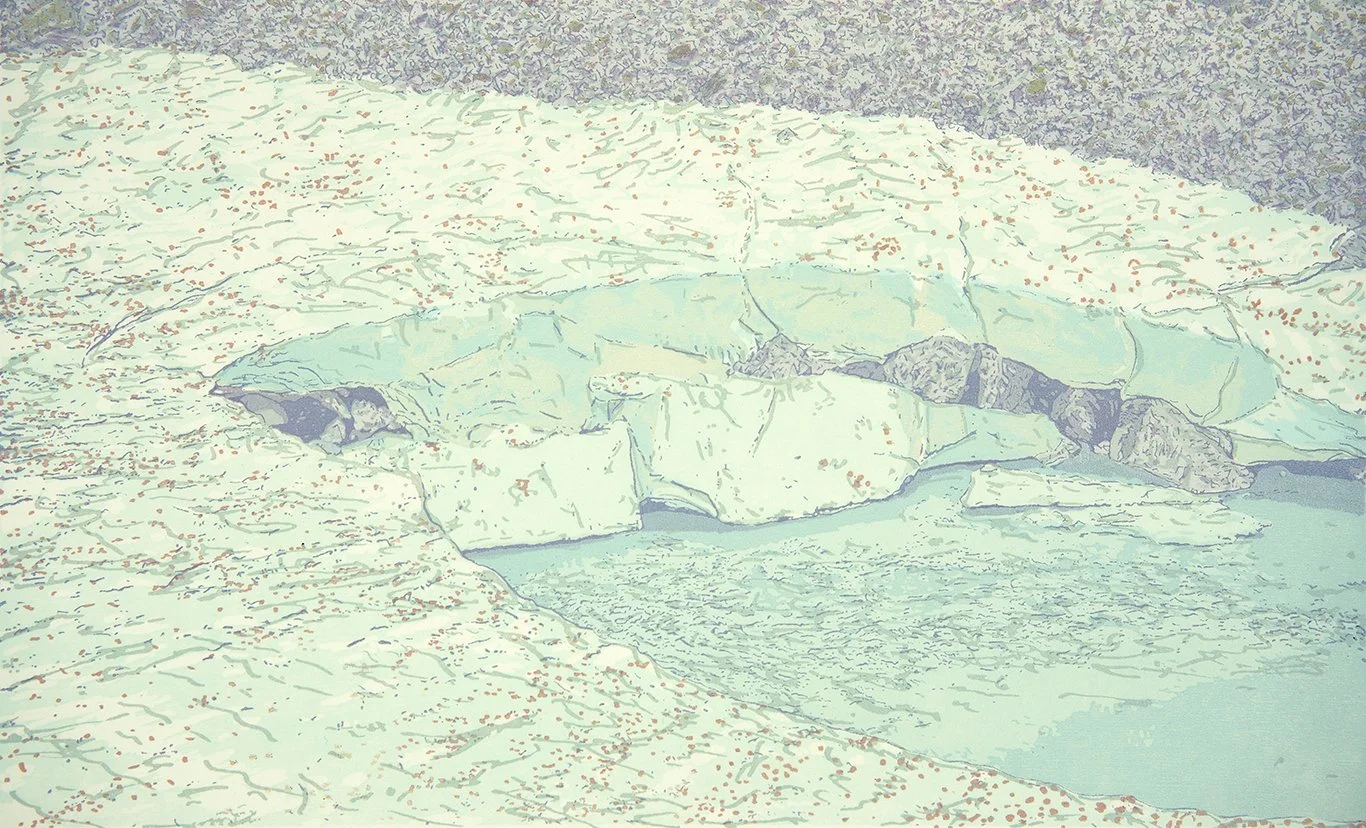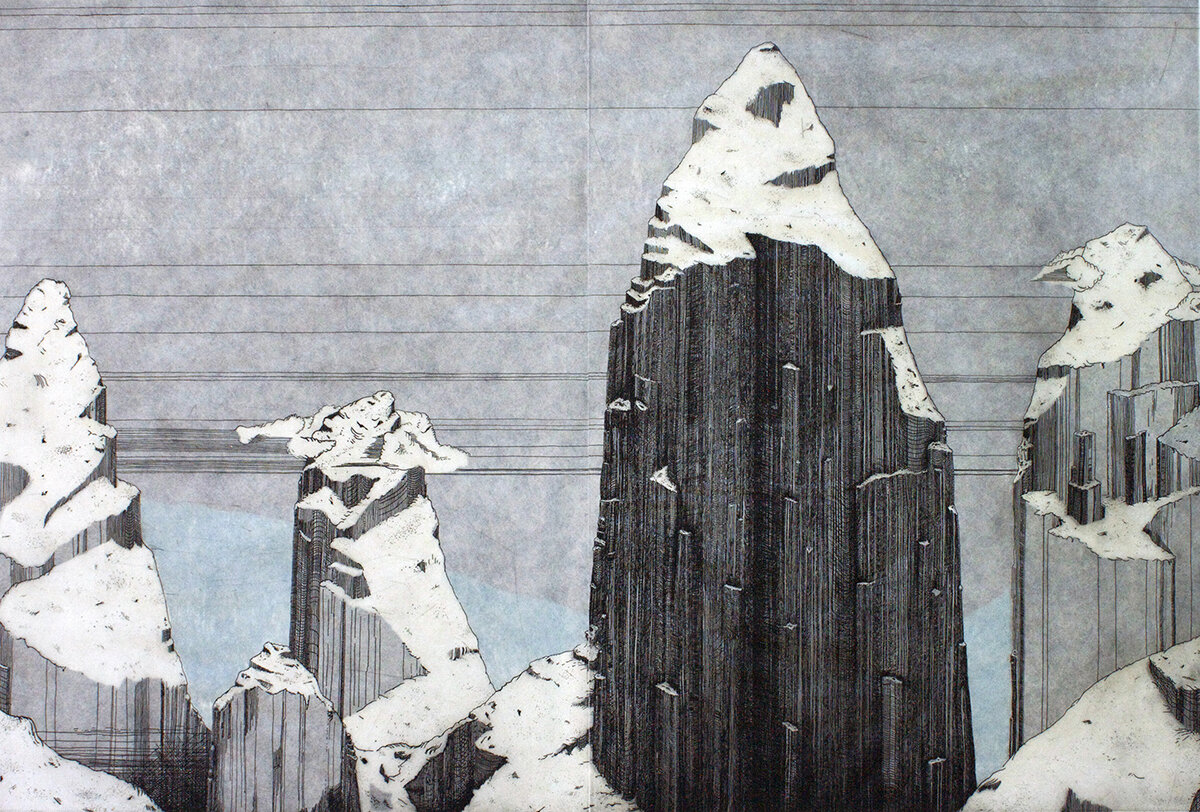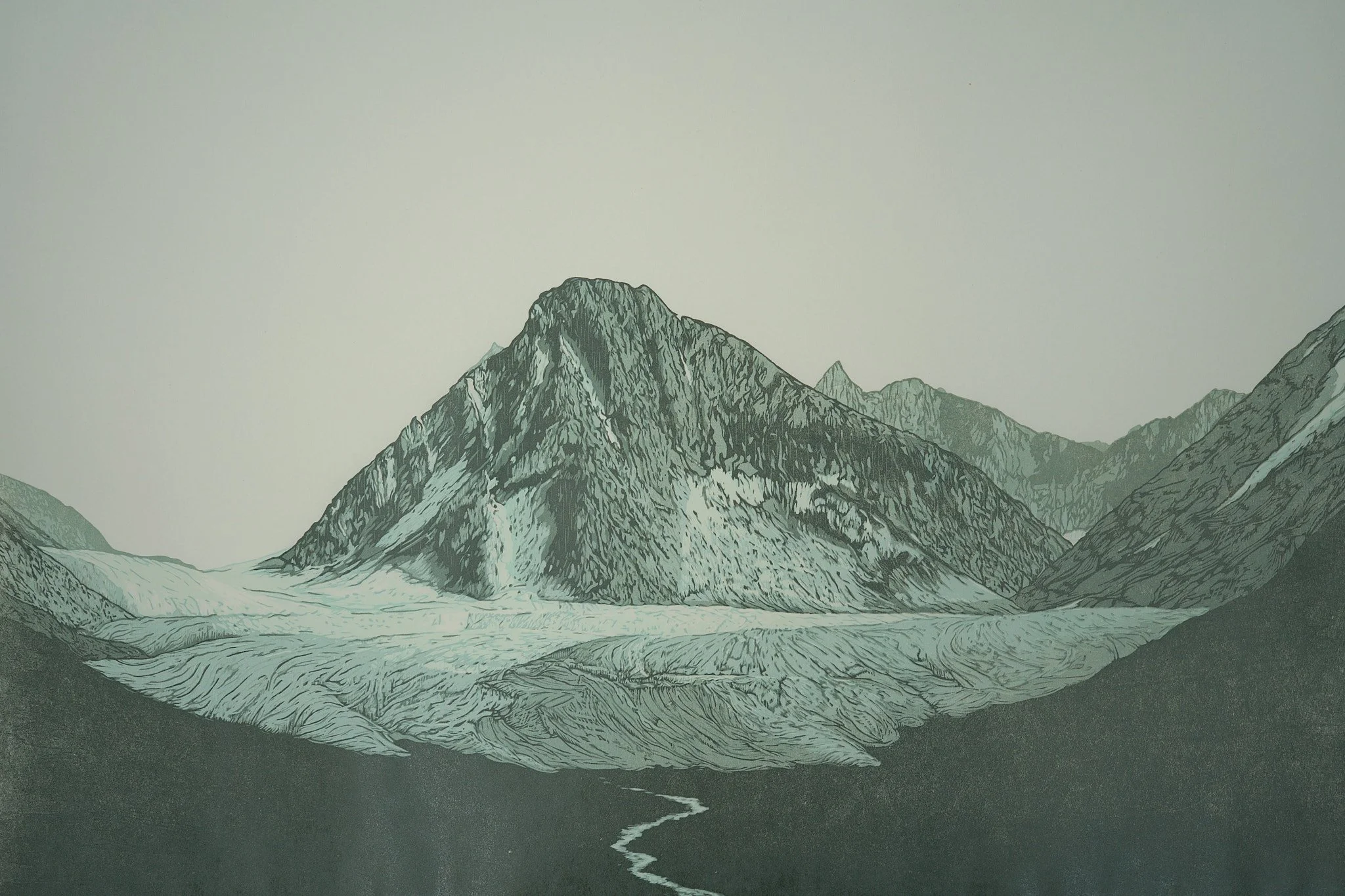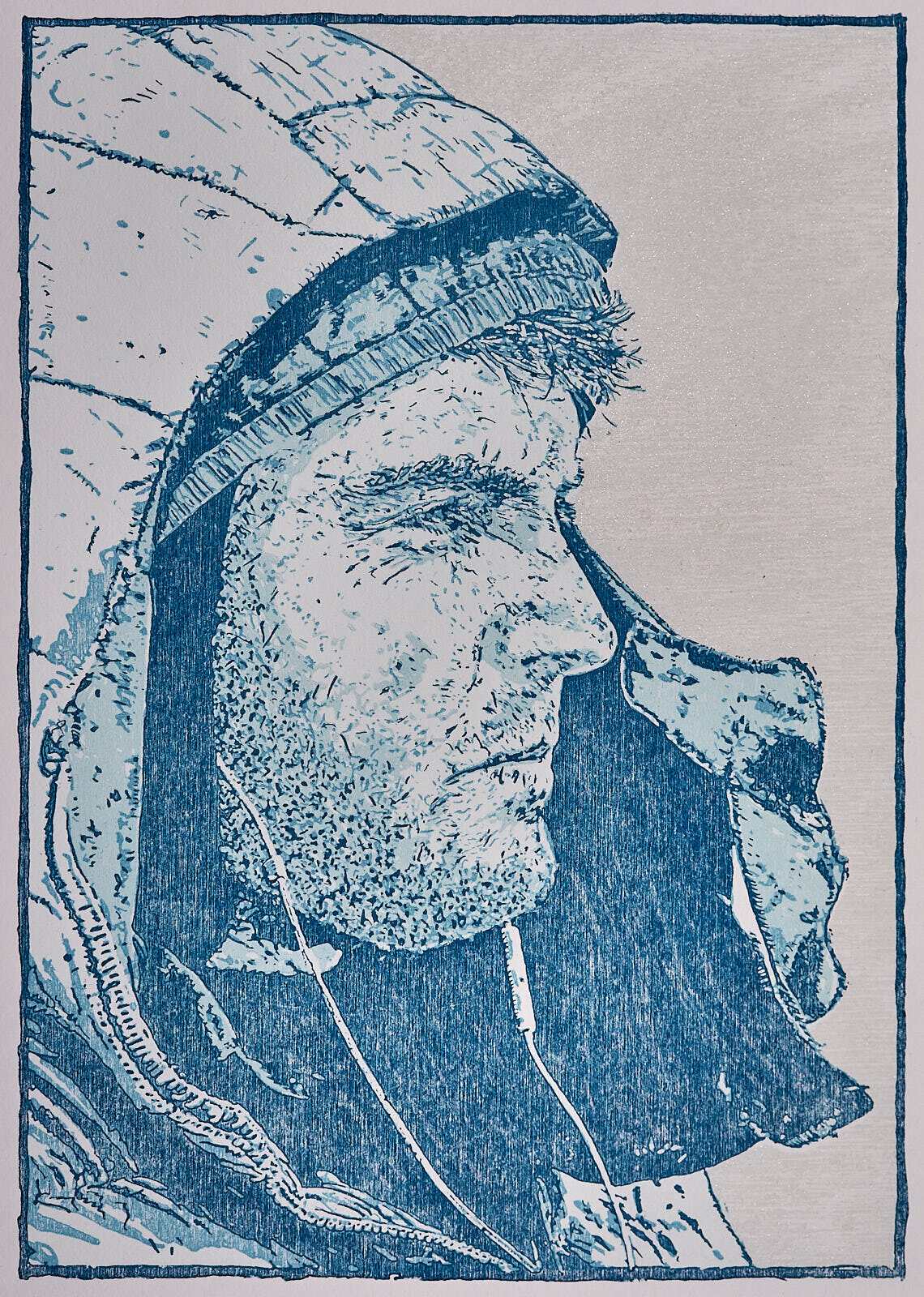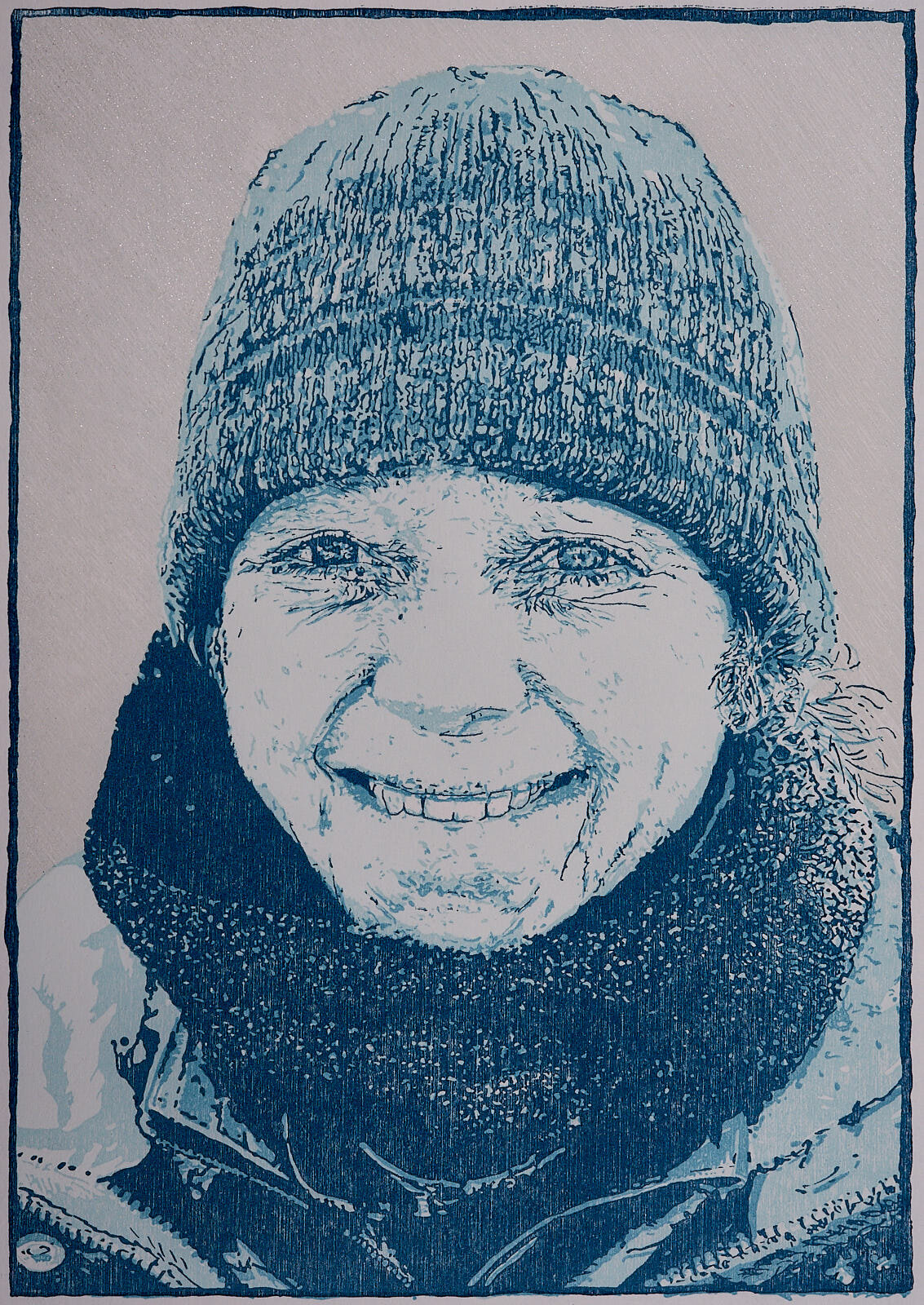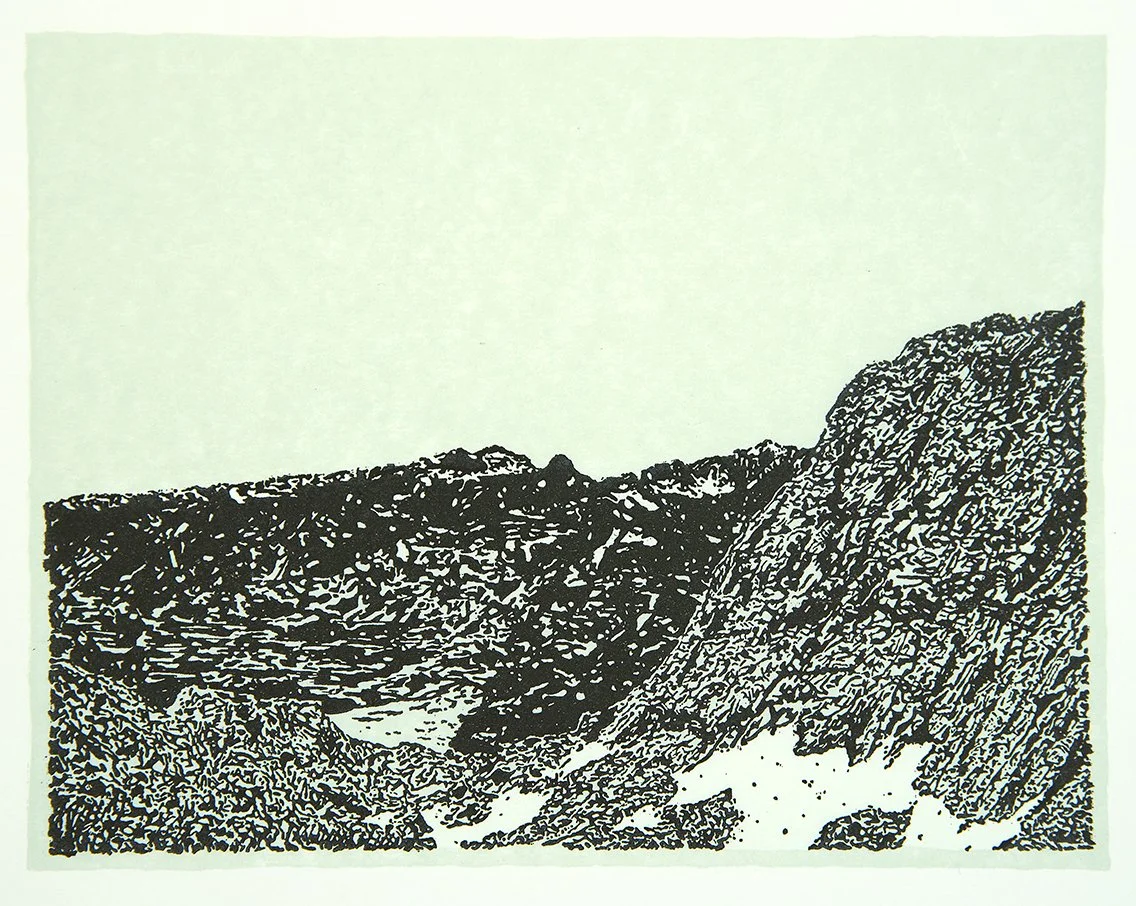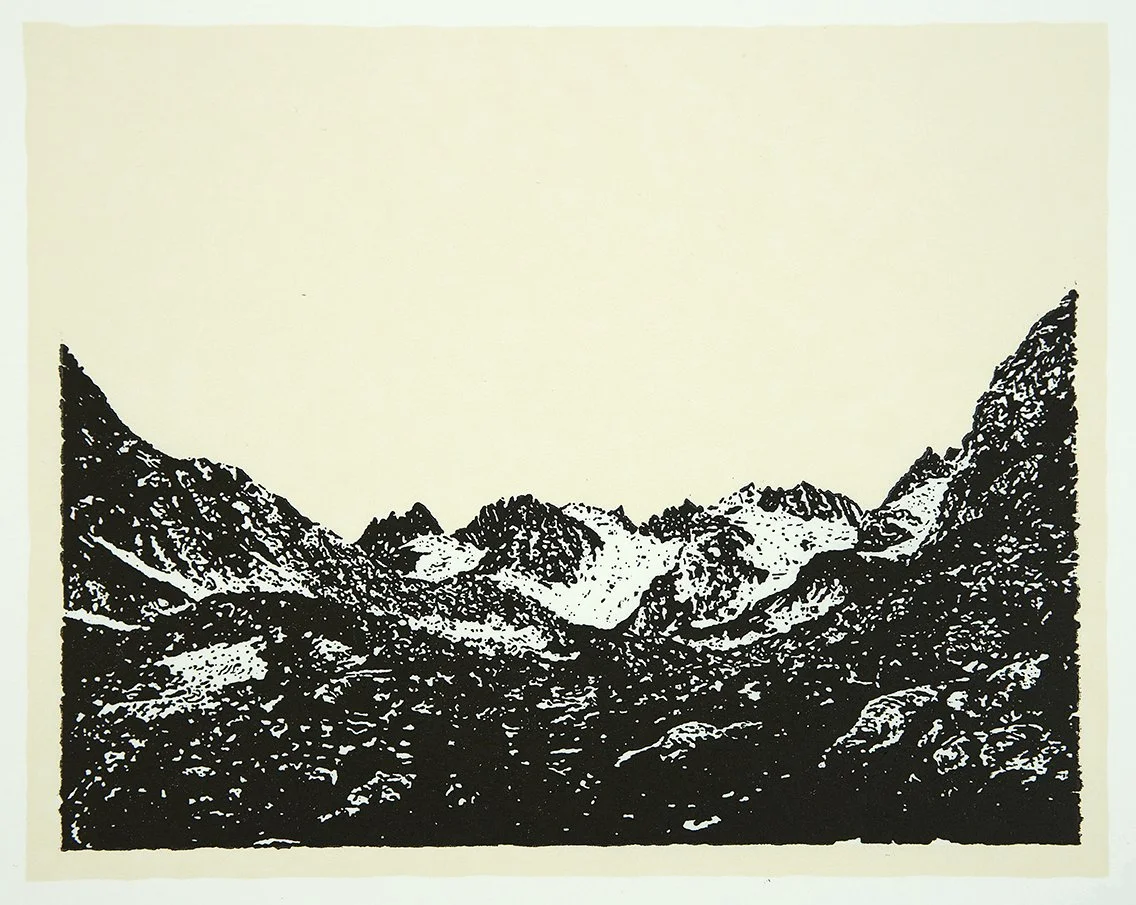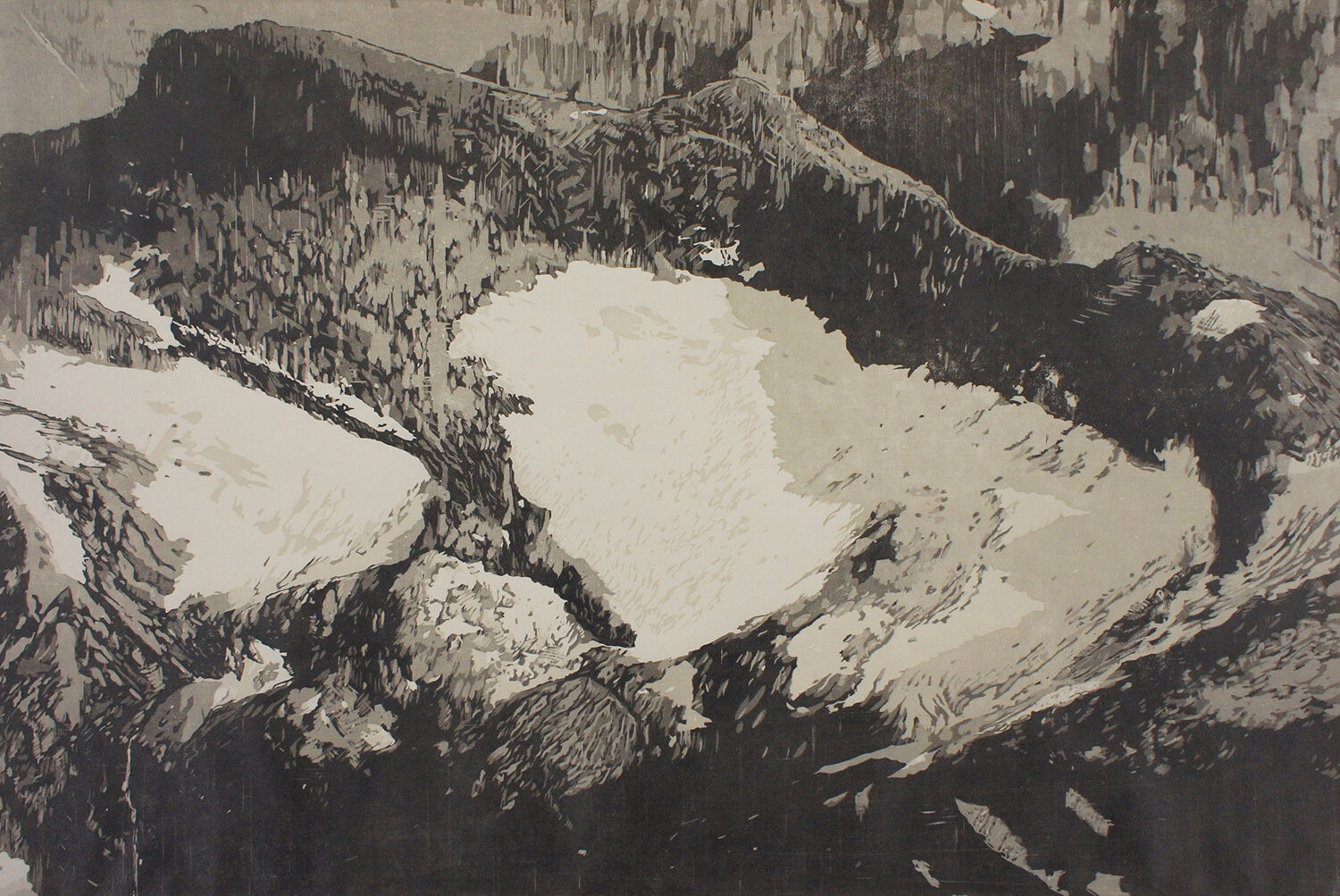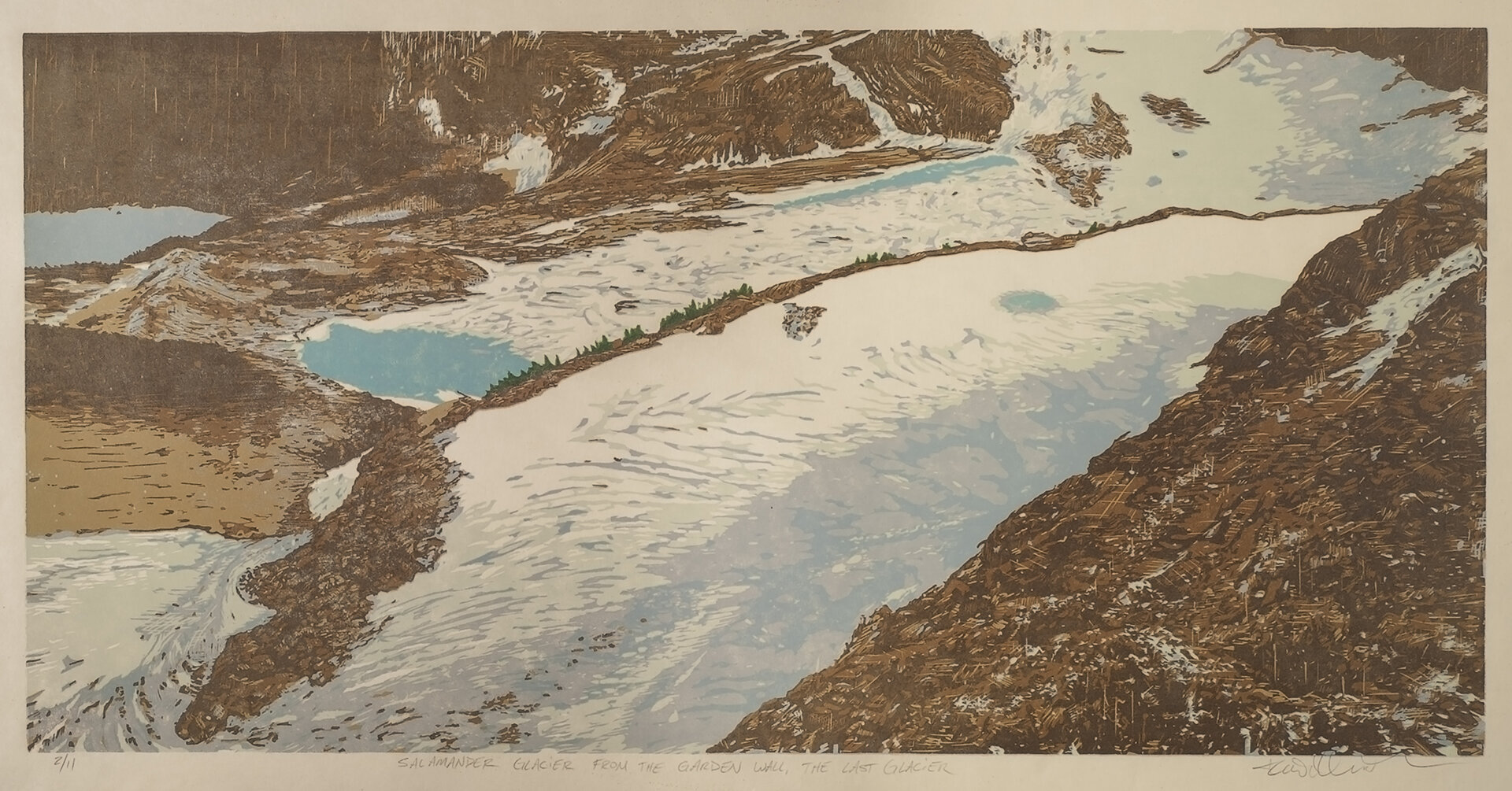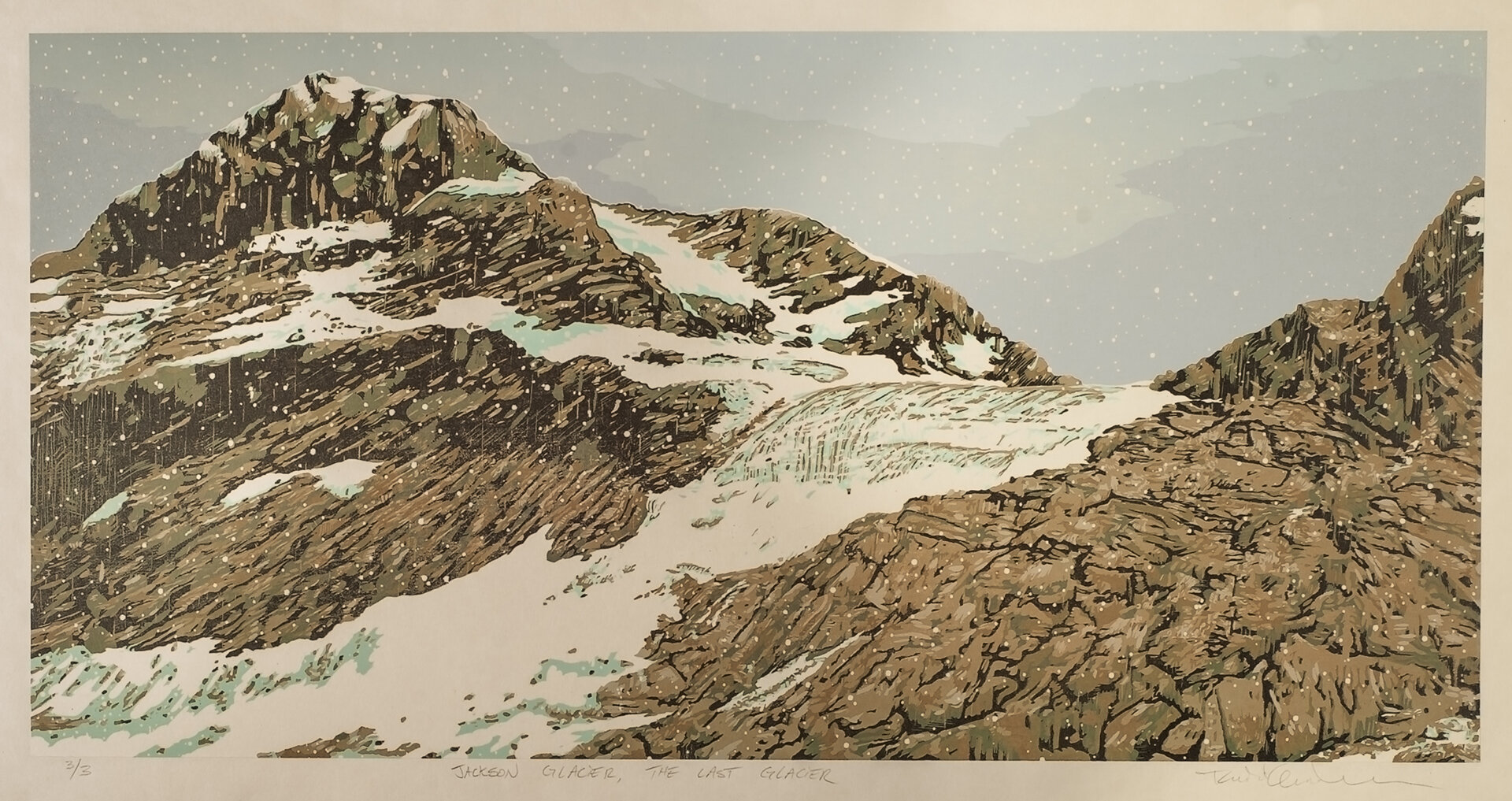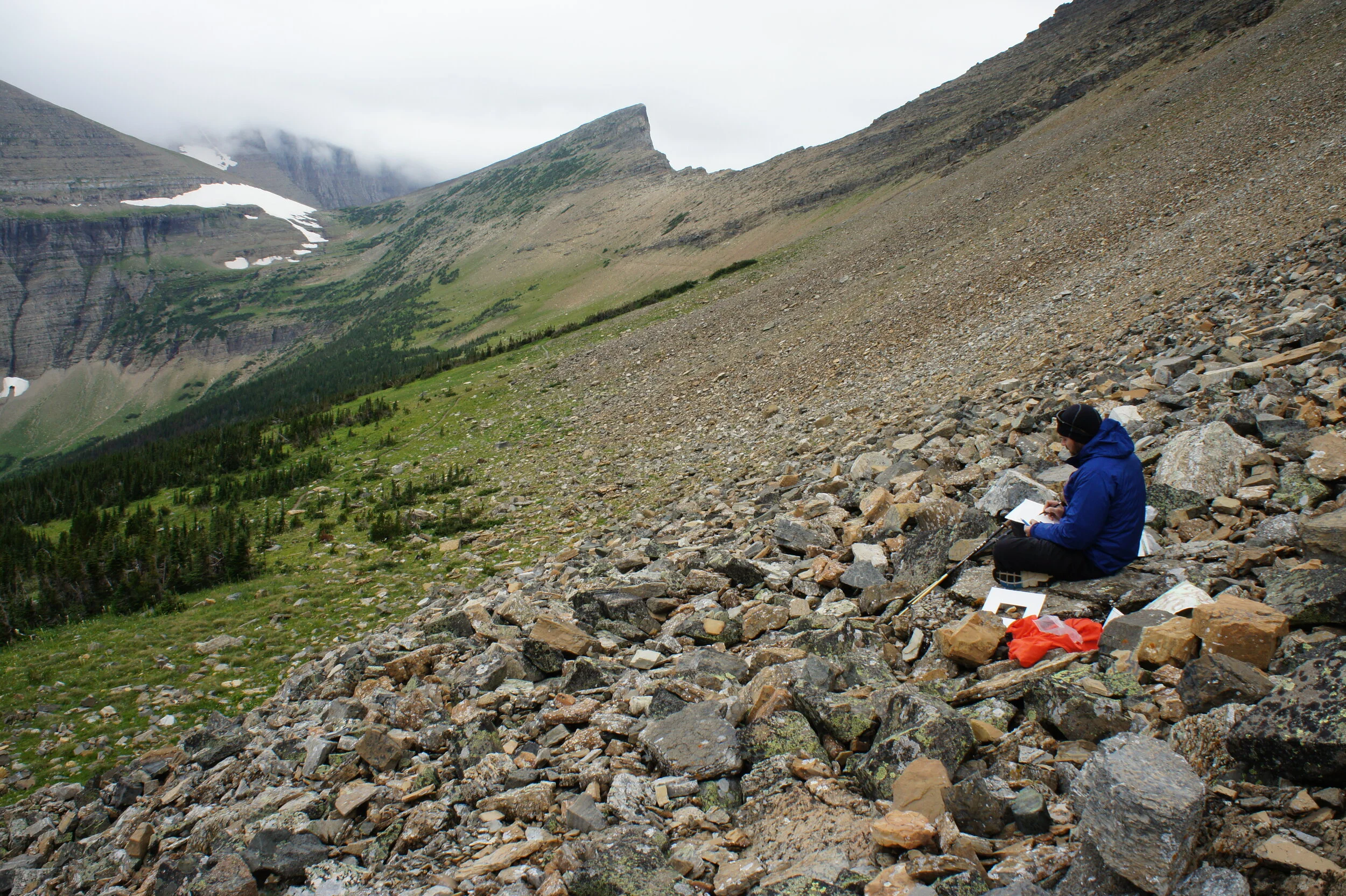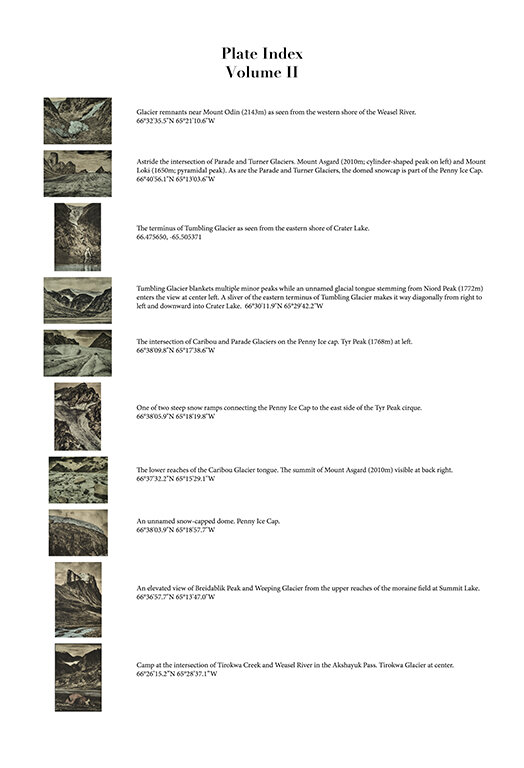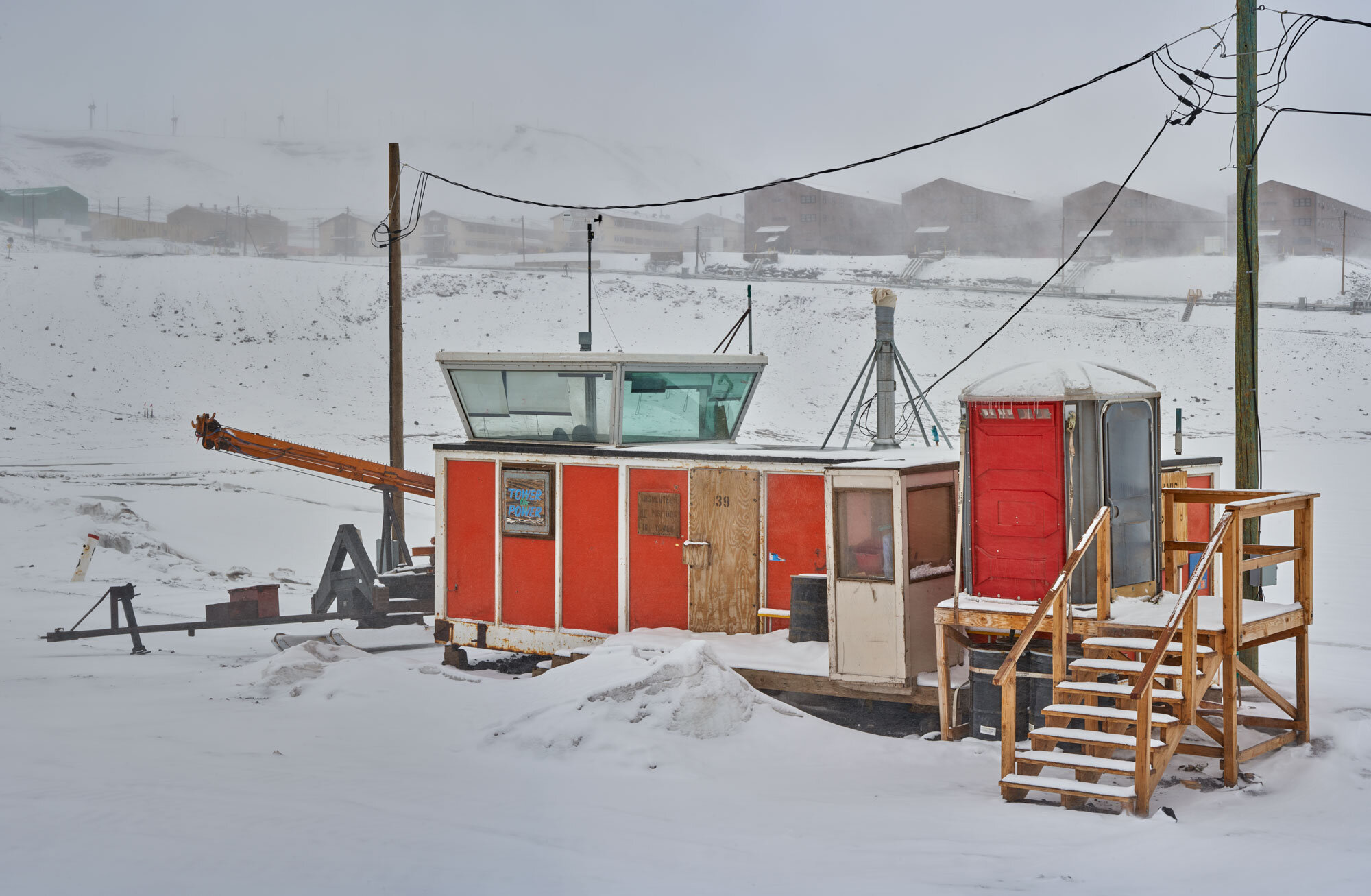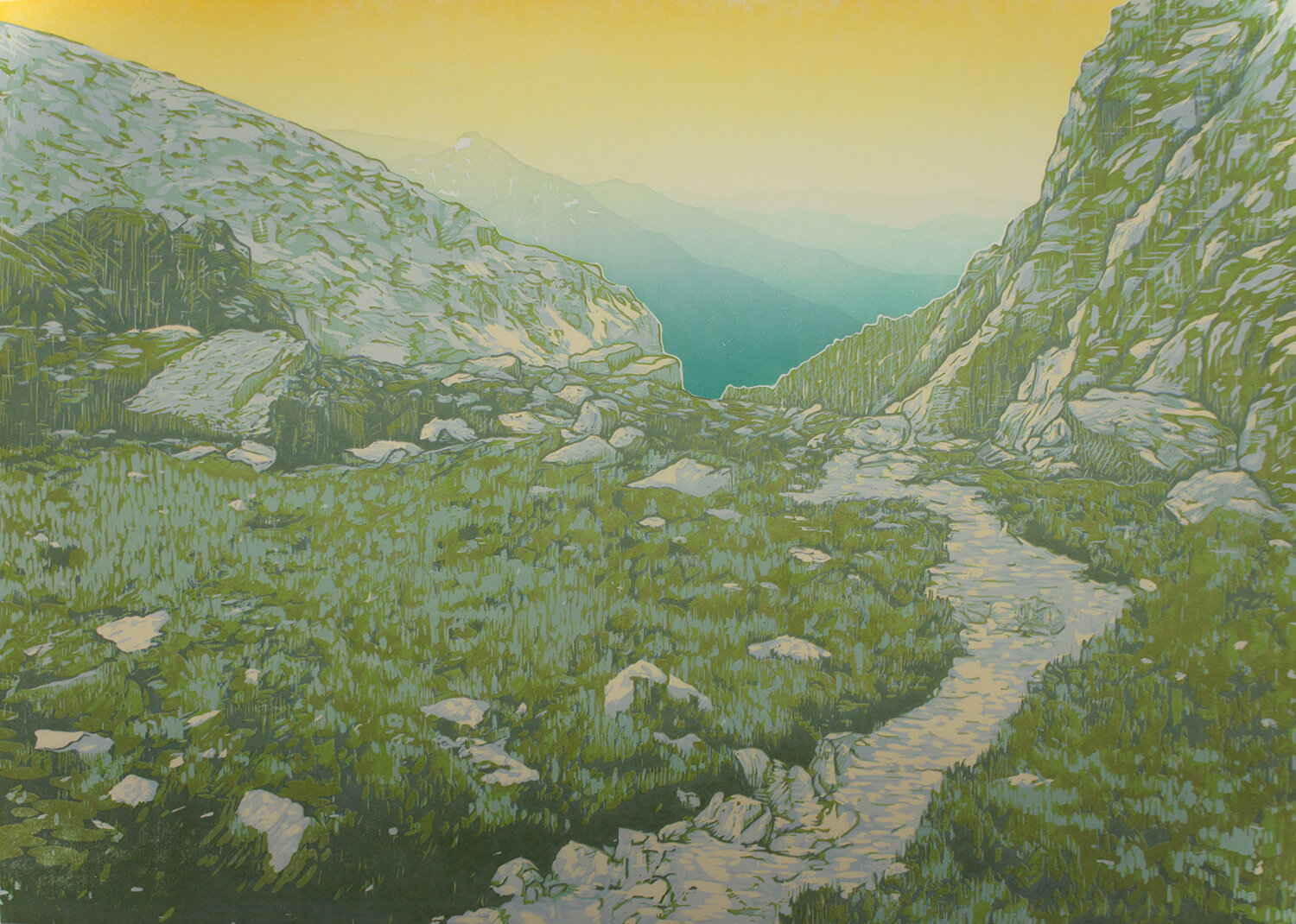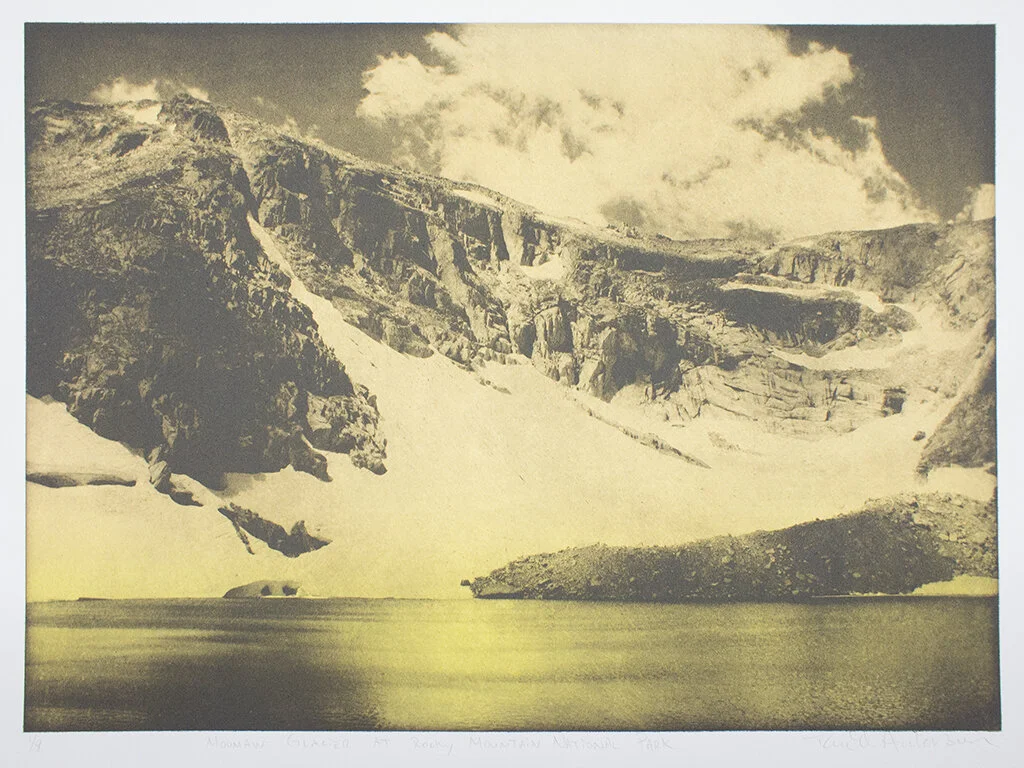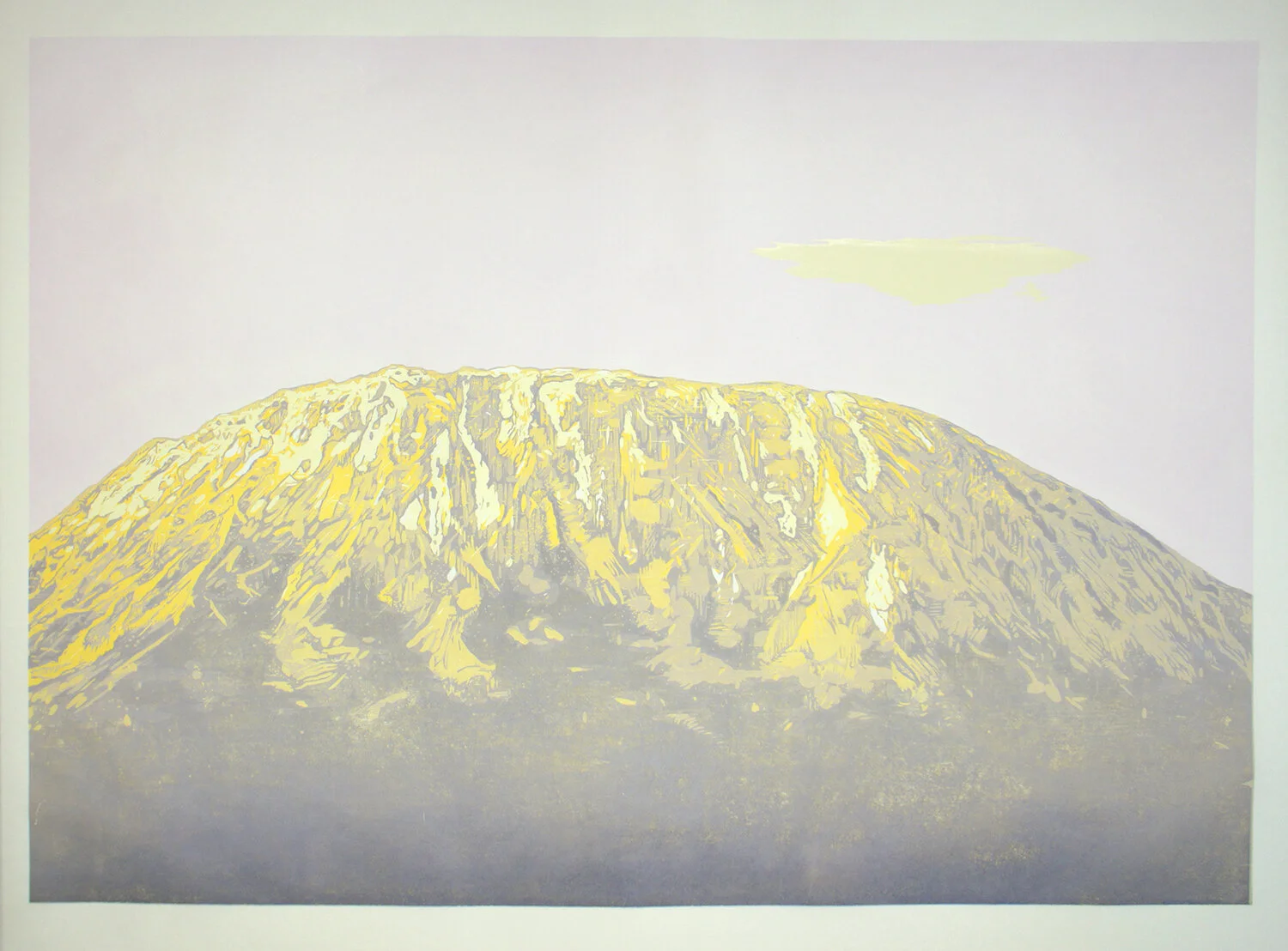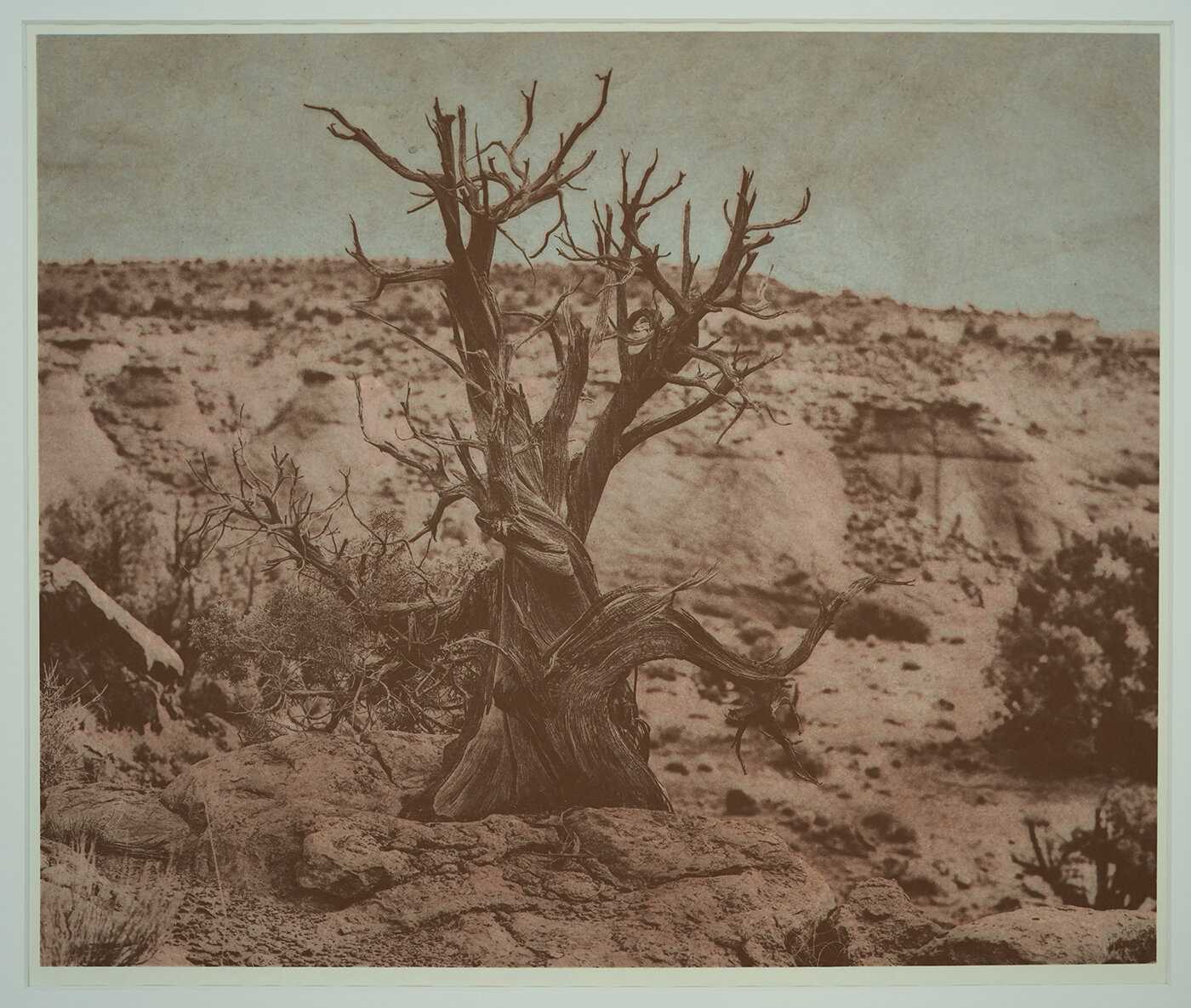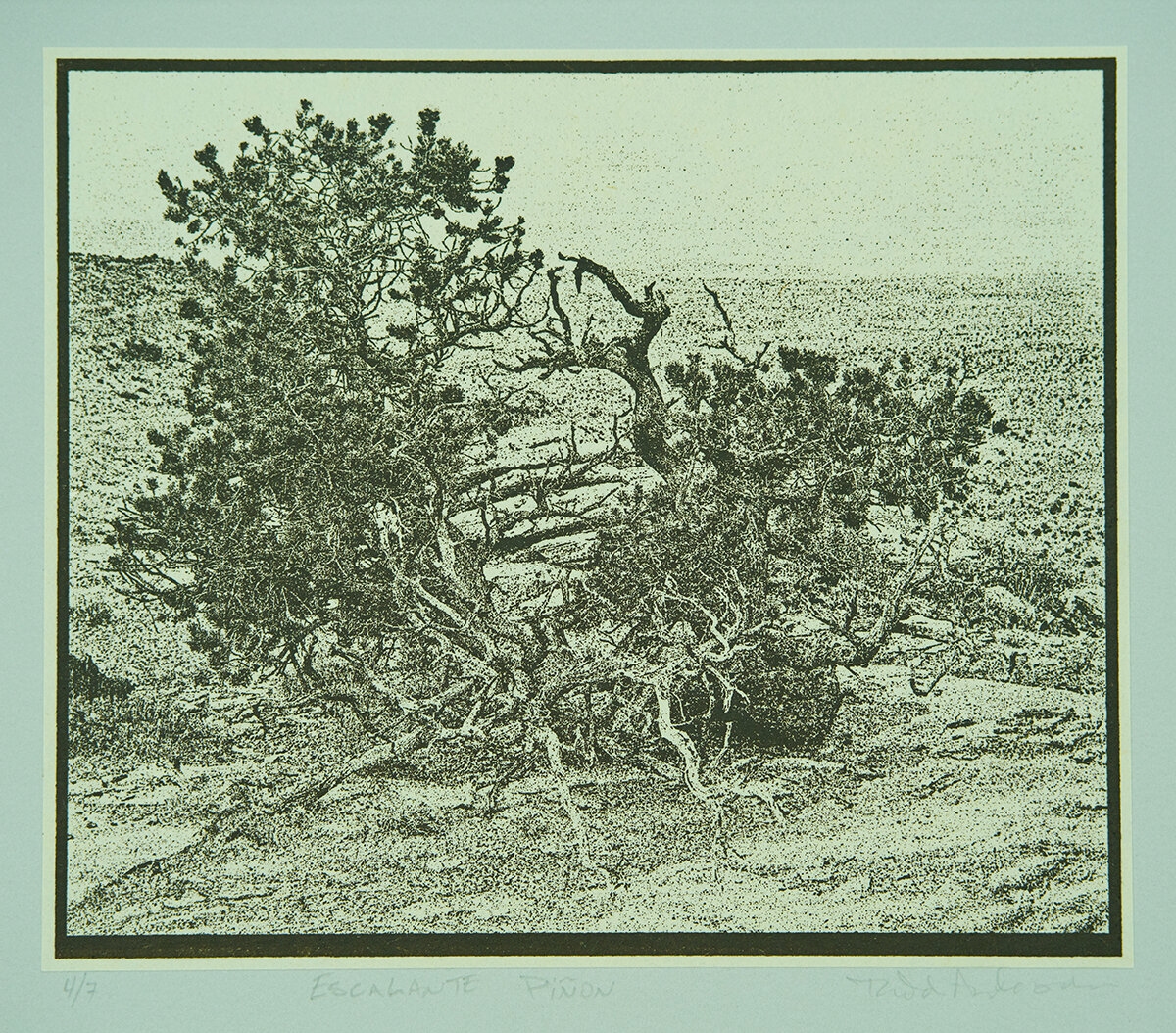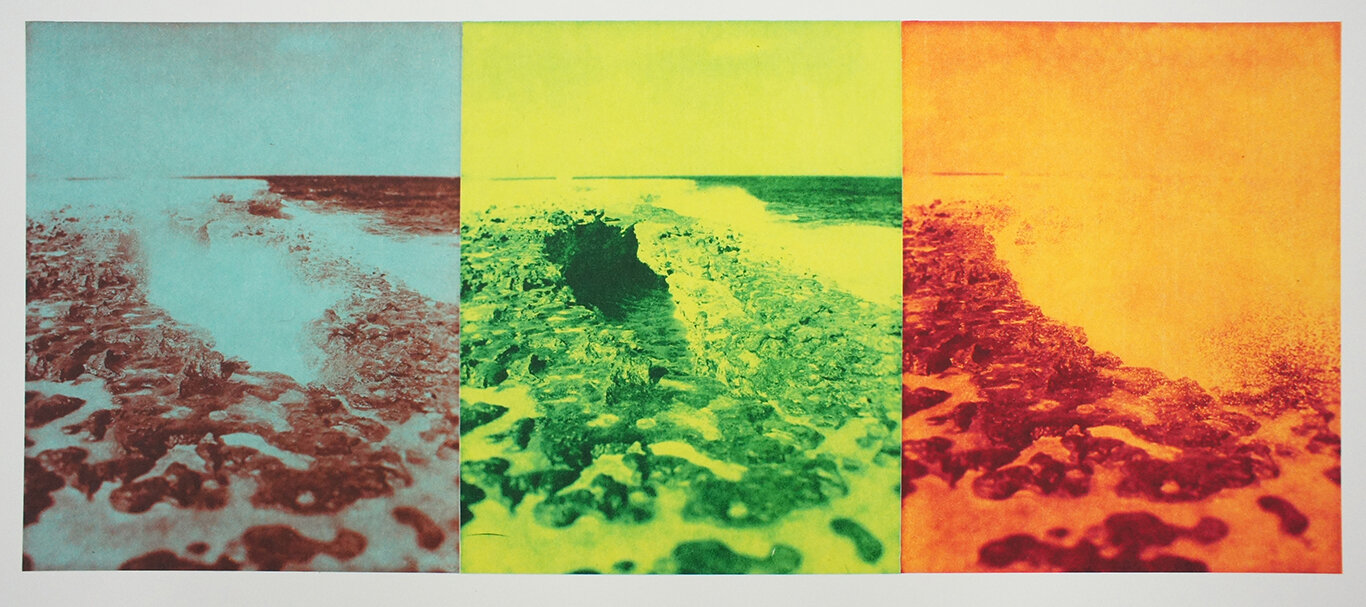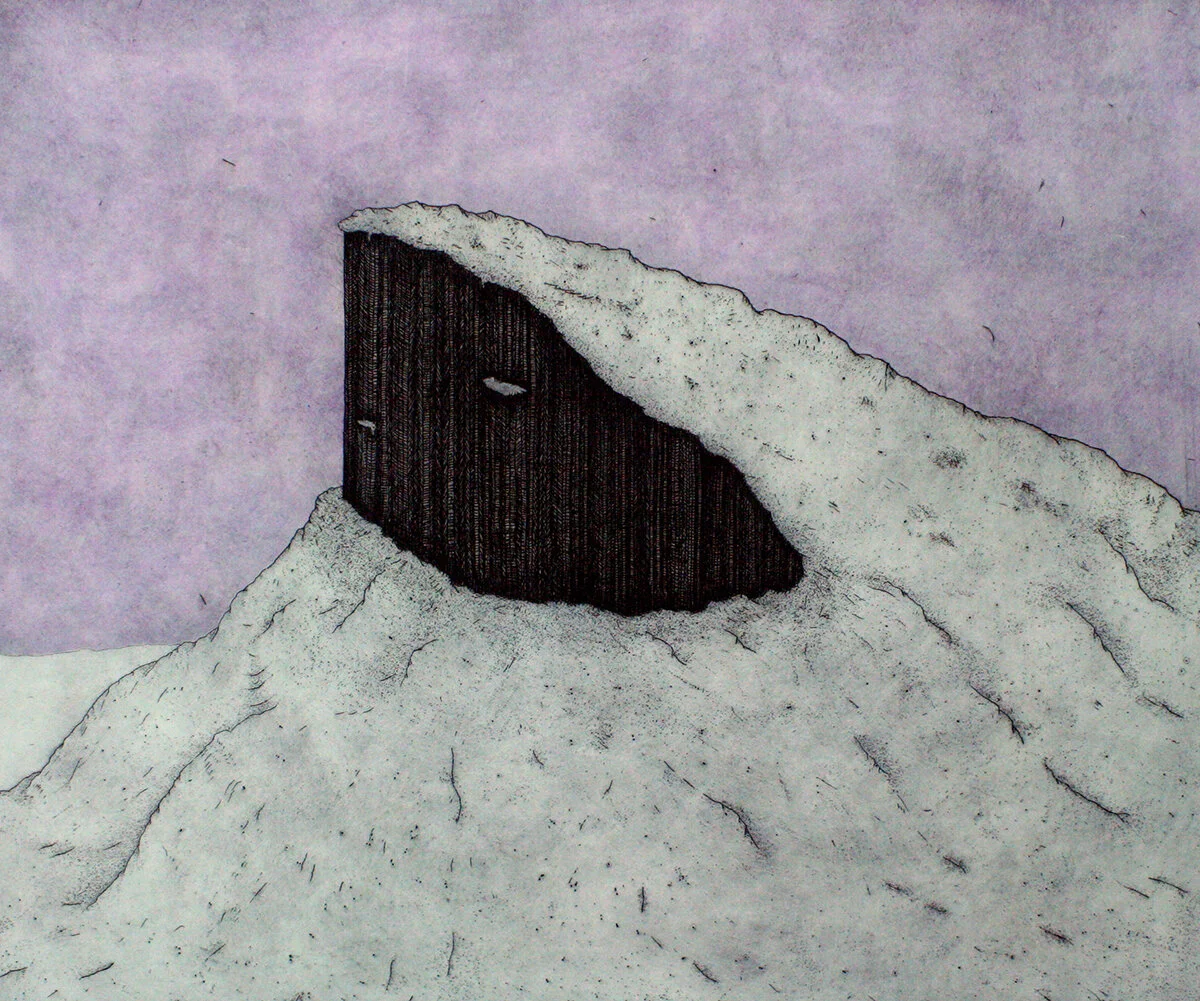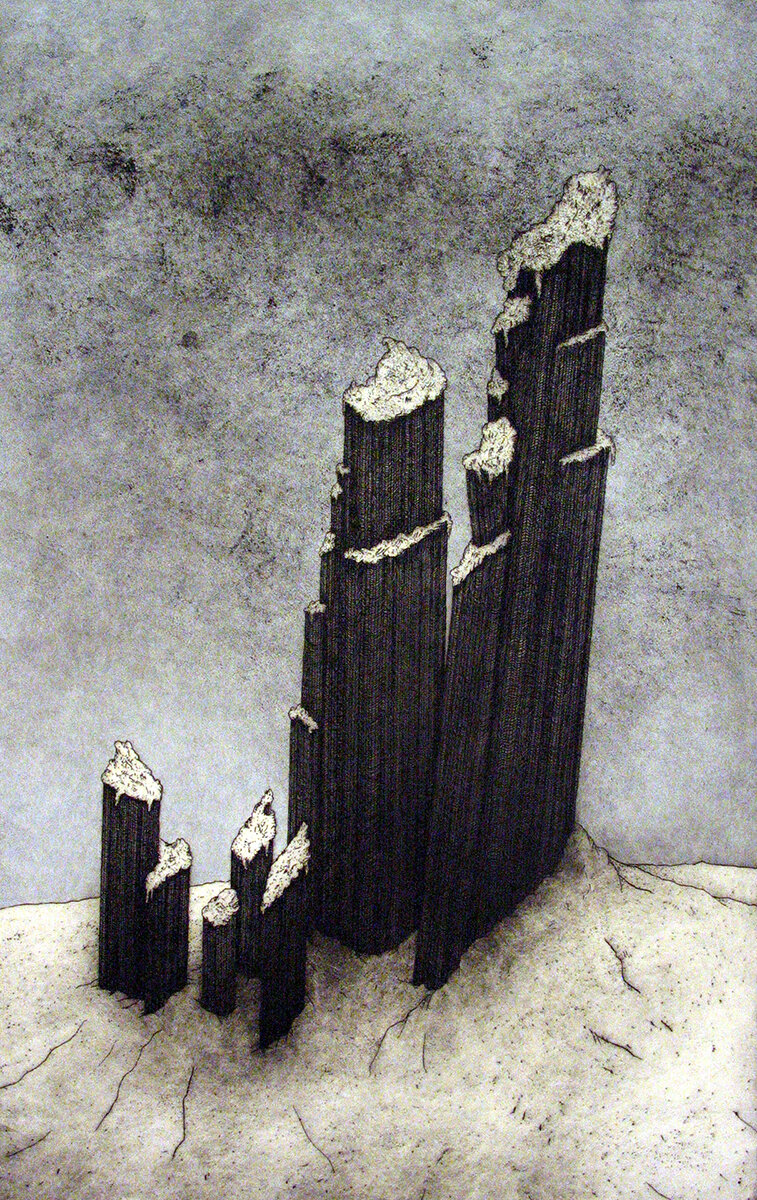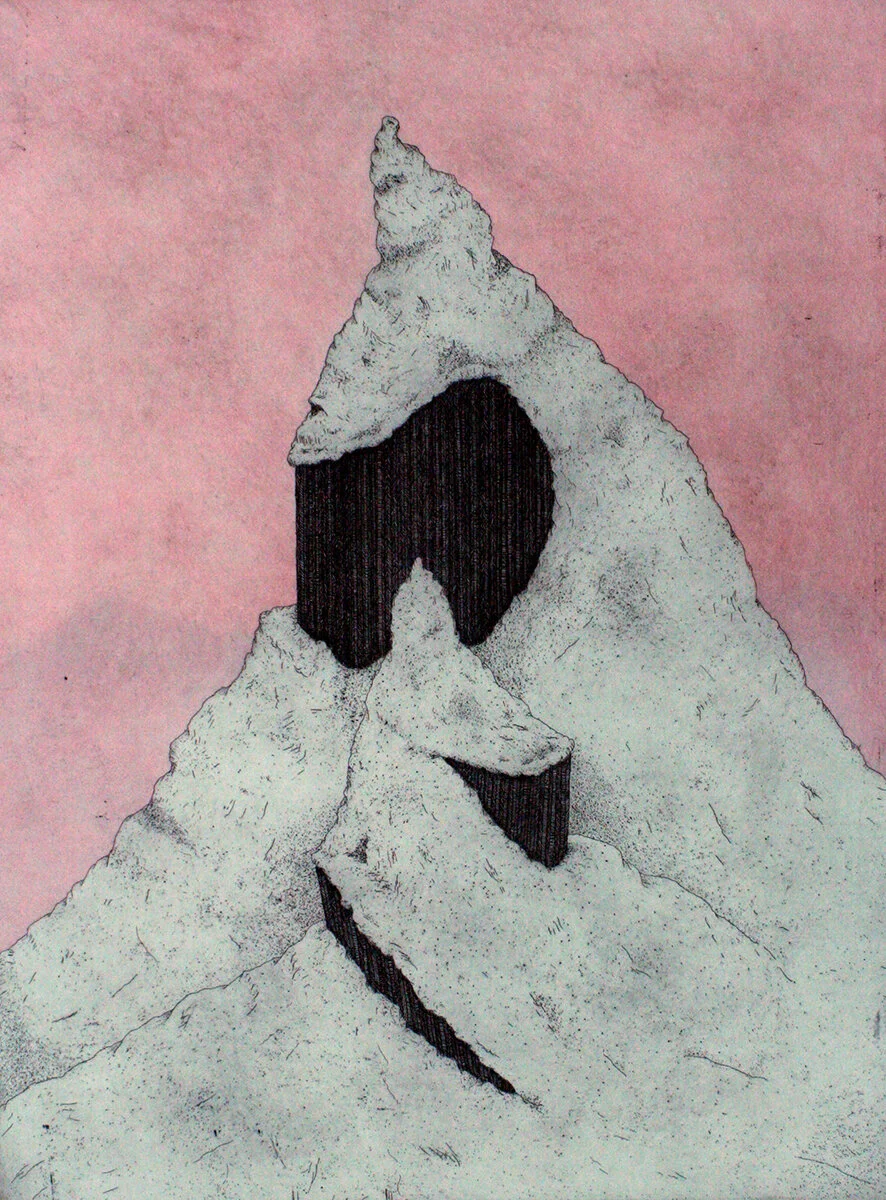Through the auspices of the National Science Foundation and during the austral summer of 2019-2020, Anderson and fellow artist collaborator Ian van Coller conducted fieldwork in Antarctica.
Shown here is the resultant artist’s book, “The Oldest Ice On Earth,” along with a set of reductive woodcut landscapes and multiple block woodcut portraits of the NSF United States Antarctic Program (USAP) I-165 ice coring team. Anderson and van Coller embedded with this team in the Allan Hills area of the Transantarctic Mountains of Antarctica, one of the coldest, windiest, and most remote locations on the planet. 30 knot winds and -20 F temperatures were registered during Anderson and van Coller’s visit. Led by Princeton University professor and geoscientist John Higgins, the team included Austin Carter (Scripps UC-San Diego), Jenna Epifanio (Oregon State University), Jacob Morgan (Scripps UC-San Diego) Sarah Shackleton (Princeton University), drill operators Tanner Kuhl and Elizabeth Morton (University of Wisconsin-Madison), and USAP Deep Field Camp Coordinator Anna Zajicek.
Higgins and his team have found the oldest ice yet discovered (3M-4M years old). Analyses of such ice confirms a direct link between planetary CO2 ppm and temperature in addition to knowledge that global heating is propelling the Earth to atmospheric temperatures not experienced for the last ~3M years.
The portraits seek to humanize and highlight the science team as individuals as much as they hope to bring attention to their scientific discoveries.
This work was made possible by the National Science Foundation Antarctic Artists and Writers Program with additional support from the United States Antarctic Program and ASC Leidos.



